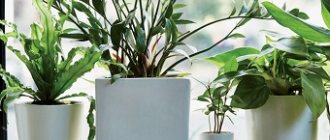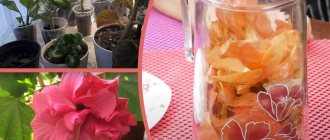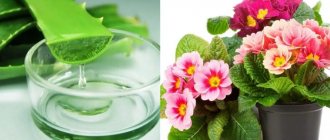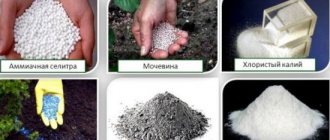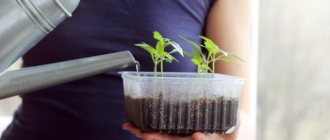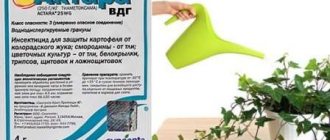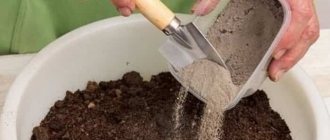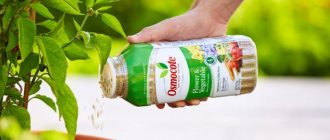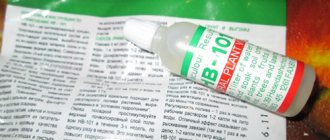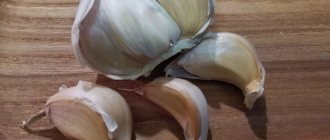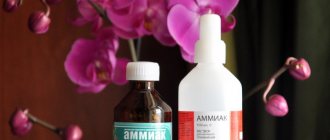Application of urea for flowers
- Properties
- What colors is it suitable for?
- How to divorce?
- How to feed correctly?
Fertilizing and treating plants is a necessary condition for obtaining a decent harvest. A reliable and proven agrochemical, which is considered universal, is urea (urea). It is used in almost all types of gardening work: for fertilizing garden, ornamental and vegetable crops. It is included in numerous mineral complex fertilizers produced by industry. And the affordable cost, ease of use and high efficiency of the agrochemical attract both owners of small garden plots and reputable industrial enterprises.
Rules for feeding plants
- Do not try to use chlorine-free fertilizers and avoid sodium salts and preferably avoid calcium salts as well. Sodium and chlorine are mobile elements and are not among those needed by plants (in nature, together with magnesium, they contribute to soil salinity).
- Based on their physiology, fertilizers are divided into acidic and alkaline. And if you use certain fertilizers for a long time, the pH changes in one direction or another.
- Try to use complex fertilizers that contain several elements. For example, you can use boron-mag, potassium-mag, ammophos, etc. It’s even better if you use stimulating substances along with complex fertilizers. For example, potassium humate contains not only nitrogen and potassium, it helps to activate plant growth.
Fertilizers can be dry or liquid. Dry fertilizers include phosphate rock, ash, etc. These fertilizers are good because they can be applied without harm to the plants; you do not have to worry about feeding the plants. These fertilizers, interacting with the soil, are well absorbed by plants and gradually over a period of time.
Fertilizing indoor plants with urea
But the quality of liquid fertilizers depends on how rich and balanced they are in microelements.
Organic fertilizers primarily include manure and chicken droppings. These fertilizers must be used very carefully, since the manure solution is concentrated and contains many bacteria. A large number of bacteria can lead to rotting of the roots. In addition, such fertilizer can cause the plant to burn. Therefore, it is very important to use rotted manure that does not have a specific odor.
Bird droppings contain uric acid, which is difficult to decompose. This manure needs to be diluted in plenty of water, but it is better to use urea instead of bird droppings. Although urea is poisonous, it decomposes quickly.
Due to a lack of fertilizers, plants grow worse, smaller and paler flowers appear, and leaves begin to turn yellow and die after flowering.
Fertilizing indoor plants
Feeding indoor plants. What you need to know
- A recently transplanted plant does not need feeding. And if you often replant the plant, then you can refuse fertilizing.
- You should not fertilize during plant stress (summer heat, temperature changes, etc.).
- If there are any signs of disease (loss of leaf turgor, appearance of signs of infection), you should also refuse to fertilize.
You can also feed plants by leaves, but to do this, you need to take warm water and dilute it 5 times more than for root feeding. After such feeding, the plant must be protected from sunlight and temperature changes.
Instructions for using fertilizer “urea”
When feeding crops with urea, you need to remember that this fertilizer stimulates the development of the vegetative part, so applying it during bud formation can lead to a decrease in yield. It is best to apply urea to plants at the time of green mass formation.
Applying urea in the autumn does not always give the desired effect, since microorganisms begin to decompose by this time, and the released ammonium is quickly destroyed. In addition, by spring, some of the nitrogen sinks into the deeper layers of the soil, from where plants can no longer consume it. The use of urea in the fall is justified only if the soil on the site is sandy or sandy loam, and the weather is not too warm and dry. Autumn fertilizing with urea is contraindicated for winter and perennial plants.
You can also add urea to the soil before planting or sowing plants directly into the furrows and holes. In this case, it is important to sprinkle the fertilizers with a small layer of soil to avoid contact of urea with planting and seed material.
In addition, in order not to expose the planting material to ammonia gas released as a result of a chemical reaction, urea can be applied 1-2 weeks before sowing.
The negative effects of ammonia gas can be almost completely neutralized if urea is added along with potassium fertilizers.
Urea application rates for flowers, garden plants and strawberries
Culture
Amount of fertilizer per 1 sq.m.
Flowers (hyacinths, hippeastrums, roses, irises, callas)
Urea application rates for garden plants
Culture
Quantity of fertilizer per plant
Young apple and pear trees
Fruiting apple and pear trees
Young cherries, plums and other stone fruits
Fruiting cherries, plums and other stone fruits
Urea is a fertilizer that can be used on a wide variety of soil types. However, it is most effective on wet soils. Urea can be applied as a top dressing even in protected soil conditions.
It is not recommended to mix urea with lime, chalk, dolomite flour or superphosphate.
When using organic fertilizers, the amount of urea applied must be reduced by 1/3.
Signs of nitrogen deficiency and excess
Nitrogen is responsible for the growth of stems and leaves. This gas is involved in the formation of chlorophyll, which is so necessary for plant photosynthesis. If garden or vegetable crops have enough nitrogen, their foliage will have a rich emerald color and shine. Nitrogen deficiency is characterized by yellowing foliage and slow shoot growth.
In addition, nitrogen is responsible for the amount of harvest: the stronger and stronger the plant becomes, the more flower buds it can form.
Before adding urea to the soil, you need to find out how much nitrogen the plants need.
Signs of nitrogen deficiency:
- plants are oppressed and develop slowly;
- the leaves grow small and narrow, pale in color or with a yellowish tint;
- leaf blades fall off prematurely;
- young shoots of fruit and berry crops are weak, thin and without leaves;
- shoots are weakly branched;
- The plant produces fewer buds than usual.
Signs of excess nitrogen:
- inhibited development of plants in the early stages of growth;
- vigorous growth of green mass in adult crops;
- large, dark-colored foliage;
- The growing season is noticeably extended, and fruit ripening is shifted to a later date.
Urea - as a means of protecting plants from diseases
Urea can also be used to control pests and diseases.
When the first warm spring days arrive (average daily air temperature is +5 °C and above) before the buds begin to swell, a concentrated urea solution (500–700 g of urea and 50 g of copper sulfate per 10 liters of water) is used to spray fruit trees against pests, as well as from scab and other diseases.
Early spring spraying with a urea solution helps delay flowering and reduces the likelihood of damage to flowers by spring frosts in heat-loving crops (cherry plum, apricot and others).
In autumn, at the end of leaf fall (late October - early November), to protect apple trees from scab and other infectious diseases, spray the trees with a solution (500 g of urea per 10 liters of water). In principle, preventive treatment of trees with a urea solution can continue on all days when the air temperature is +5 °C or higher. It is also useful to treat fallen leaves. On young trees, before treatment, carry out a test spraying in advance and make sure that the concentration of the urea solution does not harm the bark or leave burns on it. For trees older than 6-10 years, carefully clean the places where the old bark has peeled off, heal cracks and fill up hollows.
Eradication treatment of the garden in the fall. Spring therapeutic and eradicating treatment of the garden.
Hello, dear friends. I welcome you to the “Dacha Stories” channel. Our topic today is especially relevant on the eve of the start of the summer season. We will talk about treating the garden in early spring against diseases and pests.
Gardeners and gardeners should not forget that in the spring, along with the awakening of fruit trees and berry bushes, diseases and pests of our gardens awaken.
Therefore, in the spring, you must not miss the moment when it is necessary to eradicate the garden. It is not difficult to understand that this moment for processing has arrived. Agronomists call this period of tree awakening the “green cone.”
It is characterized by the fact that the bud has already burst, twisted leaflets are visible, which, however, have not yet begun to bloom. If the temperature is stable above +10 degrees, the sun is shining, there is enough moisture in the soil, the plant begins to intensively emerge from dormancy, it is possible to skip this period.
Eradication treatment can still be carried out, but following slightly different rules. You can do it a little earlier if you come to the dacha on the weekend and you have a suspicion that in a week the plant will be covered with leaves.
Most often, summer residents (including me) carry out eradication treatment using classic fungicides such as copper and iron sulfate. It’s very simple to prepare them, the main thing is to remember some features.
I'll tell you more about them. Let's start with copper sulfate.
First substance. Dissolve three hundred grams of copper sulfate in one and a half liters of hot water.
In a ten-liter sprayer, install a filter just in case, first pour two liters of water, then pour out our diluted copper sulfate.
The second substance we take is urea. 1 kilogram per ten liters of solution. Dissolve this kilogram in two liters of water and pour it into the sprayer. In eradication treatment, urea plays the role (in addition to feeding) of killers of pathogenic fungi, moss, and all kinds of pests. In addition, urea has a proven effect of delaying the flowering of trees and shrubs. This allows you to reduce the risk for the plant to fall into the period of recurrent frosts during flowering.
The third substance is an adhesive. You can take the usual, cheapest one, but be sure to use liquid soap. You need 200 milliliters per ten liters.
The fourth substance is 50 milliliters of 10% ammonia, per 10 liters. In this case, ammonia enhances the effects of copper sulfate. If you don't have ammonia, you don't have to add it. Sometimes I even simply forget about it, although I always have ammonia.
Another substance that makes sense to add, or rather I add, is 50 milliliters of a drug such as “Avgust Humate + 7 Iodine” diluted in a half-liter jar. In general, according to the instructions, 10 gamma of this drug should be diluted in 50-100 liters of water, but here such a concentration is acceptable. The drug is very cheap and I like it.
Add water to 10 liters and shake thoroughly.
A solution based on iron sulfate.
The preparation of a solution based on iron sulfate is somewhat different from a solution with copper.
First. We dilute half a kilogram of iron sulfate in a liter of warm water.
Second. Immediately, without waiting for the oxidation from 2-valent iron to 3-valent iron, since iron sulfate oxidizes very quickly in air, pour 40 grams of citric acid into the iron sulfate solution and mix thoroughly. The purpose of mixing iron sulfate with citric acid is precisely to complex it in its divalent form, the whole point is that trivalent iron loses its fungicidal properties almost completely.
This quantity is the same for ten liters of solution.
The remaining components, urea, soap and “Avgust Humate + 7 Iodine” remain and are diluted in the same way; ammonia is not used in the second solution.
According to personal feelings, a solution based on copper sulfate is stronger, but I could be wrong. However, copper sulfate is more expensive than iron sulfate, but you need to buy lemon juice for the second solution, and that also costs money. So the price of the solution is approximately the same.
Urea as a fertilizer
Urea is best known to summer residents as one of the most common nitrogen-containing fertilizers. The main consumer of industrially synthesized urea is crop production, for which more than 100 million tons are produced annually in the world.
Urea fertilizer Urea belongs to the group of amide nitrogen fertilizers, that is, the nitrogen in this fertilizer is in organic form - in the form of carbamic acid amide (N H₂-). Urea is the most concentrated nitrogen fertilizer (it contains 46.2% nitrogen) and the most economical. Two varieties are produced - grades A and B. The first is for livestock breeding and industry, the second is for crop production.
Urea grade B is colorless or white granules or crystals that dissolve well in water. Anti-caking agents are added during production, so urea is perfectly stored, does not clump, and disperses well when applied by machine. However, this substance is very hygroscopic, so it must be kept in a place protected from moisture.
During the production of urea, anti-caking agents are added, so the urea is well dispersed when applied by machine.
When and how much to deposit
Urea can be used to fertilize any crops and in a variety of cases:
- as the main fertilizer,
- for early spring fertilizing of perennial crops,
- for root and foliar feeding during the growing season,
- in irrigation systems for fertigation and hydroponics.
Urea is well suited for fertigation.
Urea application rates depend on the crop, but in general, from 1.3 to 2 kg are applied per 100 m² as the main fertilizer in the fall for vegetables, flowers and planting berries, that is, about 20 g per 1 m². For spring feeding of vegetables and flowers, before sowing - 0.3-0.4 kg, for berry crops - 0.4-0.7 kg (3.5-5.5 g/m²).
For liquid root feeding, 30-65 g of urea is diluted in 10 liters of water - the solution is enough to treat 10 m². To fertilize the leaves, dissolve 50-100 g of urea in 10 liters of water. This amount will be enough to spray approximately 150 m² of plantings. A urea solution in the correct concentration is not toxic to plants; leaves do not get burned when sprayed. You can choose fertilizers for your garden in our market, which unites large online stores: take a look at the Fertilizers for the garden section. You can also see separate offers for urea. Select urea.
Horse dung
Horse manure has a loose, porous structure; it decomposes quickly, releasing 50 to 70 ºC of heat. This is an ideal soil fertilizer in greenhouses, greenhouses and conservatories. Horse manure is also suitable for the garden: it copes well with fertilizing heavy and infertile soils.
Horse manure contains nitrogen, phosphorus, potassium and other valuable elements that contribute to increased plant productivity and increased resistance to external factors and diseases. The effect of horse manure is prolonged, so its one-time application ensures an increase in soil fertility for several years.
2 kg of fresh horse manure are diluted in 10 liters of water, 1 kg of sawdust is added to the solution, and left for two weeks, stirring regularly. Vegetable crops are fed with this infusion after heavy rain or watering. You can add fresh horse manure for autumn digging, but in this case the manure will lose half of its beneficial properties.
Horse manure is perfect for creating a warm bed: dig a trench half a meter deep in the greenhouse, lay a 20 cm thick layer of fresh horse manure in it, fill the trench with soil on top of the manure and pour it with a warm pink solution of potassium permanganate with the addition of Nitrophoska (2 tablespoons) and wood ash (1 cup).
Horse manure cannot be used as biofuel if a fungal coating has formed on its surface. Insufficiently rotted manure is also not suitable for this purpose, since unweathered ammonia can poison the plants. It is undesirable to use horse manure to fertilize soil that is too dense, since its decomposition will accumulate hydrogen sulfide and methane, which also poison plant roots.
Do not apply fresh horse manure under potatoes as it carries scab.
https://www.youtube.com/watch?v=-MWZp4nVybI
Basically, fresh manure (from any animal) is applied to the soil for autumn digging. For crops with a long growing season, manure can be applied in the spring.
Rotted horse manure is much healthier for plants, since it contains several times more nutrients than fresh manure. They fertilize the trunk circles of fruit trees (5 buckets each) and berry bushes (3 buckets each). Rotted horse manure is used to mulch beds with tomatoes and strawberries, and if there is a lot of sawdust in it, it is suitable for mulching the tree trunks of fruit trees after watering.
Since purchasing fresh horse manure is problematic for most gardeners, stores sell horse manure in granules. The most popular granulated manure is considered to be “Horse Organavit”, which differs from other brands of fertilizer in that most of the nutrients it contains are preserved in a form accessible to plants.
In addition, it does not increase the toxicity of the soil; it does not contain weed seeds or substances harmful to humans. You can purchase horse manure in bags, each containing 40-50 liters of dry matter weighing 35-40 kg. Not long ago, liquid concentrate of horse manure appeared on sale in 5-liter containers, which was highly appreciated by gardeners.
Features of the use of urea
Urea is used for different cases: as the main fertilizer, for early spring fertilizing of perennial plants, during root and foliar fertilizing. The rate and methods of application depend on the crop.
For root feeding
Vegetables
Urea in its pure form is used to feed vegetable crops no more than once per season and only before the fruits begin to ripen . The method of applying the pesticide is different for each vegetable, so to fertilize cucumbers, prepare a watering solution in the following proportion: 15 g of granules are dissolved in 10 liters of water and 1 liter of the resulting composition is used per plant.
Trees
Feeding trees is an important stage of care; over time, useful microelements are washed out of any fertile soil and the yield decreases. To increase tree growth and abundant fruiting, the plant is fertilized with urea.
When growing a fastidious apricot, you need to be extremely careful about feeding it. In the spring, the tree requires root feeding with urea three times: after the snow melts, before flowering and immediately after it.
Flowers
Root feeding of flowers is carried out in one of two ways:
- dry granules in rainy weather;
- aqueous solution - in dry conditions.
Roses are fed in the spring, at the beginning of the growing season and after flowering in the summer, to stimulate the formation of new shoots on which buds form. To feed roses, it is necessary to prepare a solution, observing the ratio: 1 tbsp. spoon of urea per 10 liters of water. It is necessary to water one liter for each bush.
When feeding with dry granules, it is better to make small holes and put fertilizer in them, in an amount no more than a matchbox per 1 square meter. m and sprinkle with earth.
For foliar feeding
Mineral fertilizer is widely used for spraying any crops using a spray bottle with a pump. The procedure is resorted to when the need arises; it is required when the foliage turns yellow and falls off, and the ovaries die .
Treatment begins in the morning or evening, dissolving the granules in water before use. Urea rate for spraying one adult plant:
- pome trees (apples, quince, pears) the dosage is 200 g per 10 liters of water;
- stone fruit trees, dissolve 120 g of fertilizer in 10 liters of water.
Fertilizer granules for vegetable and berry crops must be dissolved in 10 liters of water , based on the application dose:
- cucumbers and legumes - 15 g;
- carrots, beets, radishes, tomatoes, onions, garlic, potatoes, cabbage - a teaspoon;
- zucchini, eggplant - 1 tablespoon;
- fruit bushes - 10 g;
- strawberries, strawberries, raspberries - 70 g.
The treatment is carried out slowly: first, 2-3 lower leaves are sprayed and observed. If nothing happened to the foliage, then the solution was prepared correctly.
Pig manure
Many readers ask whether it is possible to fertilize garden plants with pig manure. Pig manure differs from the manure of other domestic animals because pigs are omnivores, that is, they eat not only plant foods, but also animal foods. This leads to the fact that pig manure is not suitable for all plants:
Due to its high nitrogen content, pig litter cannot be used fresh and undiluted. It contains a lot of weed seeds, parasite eggs (salmonella and various helminths), bacteria and other infectious agents.
Applying fresh pig manure to slightly acidic and acidic soils makes them unsuitable for farming. If you still decide to use fresh pig manure, first neutralize its oxidizing properties by adding lime (50 g per bucket of manure), then mix it with horse manure in a 1:1 ratio.
But it is best to resort to infusing fresh manure: dilute it with water in a 1:1 ratio and let it sit for a week. During this time, the bacteria will die and the amount of nitrogen will decrease to an acceptable level. Before use, 1 liter of infusion is diluted with 10 liters of water.
And yet, it is advisable to use pig manure in a rotted form: when composted, it becomes more saturated and useful for structuring the soil. And to speed up the rotting process, add a little chicken or horse droppings to the pig manure.
Pig manure is placed in a compost pile or container to rot. During the process of decay, it loses up to 75% in weight, but at the same time all parasites, bacteria and other pathogens die in it. The period for composting pig manure before the formation of rotted manure is 1 year, and such a fertilizer will have an active effect for 3 years.
An easier way to obtain rotted manure or humus is to lay the manure for the winter with the first snow in a hole up to 2 m deep. Cover the manure with a layer of soil 20-25 cm thick, and before the onset of spring, the manure has time to rot and become saturated with useful substances.
Place the compost pit on a hill and as far as possible from the plantings. Semi-rotted pig manure that has been composted for less than a year is still dangerous for plants: the weed seeds, harmful bacteria and microorganisms it contains are still active.
It is better to incorporate semi-rotted manure into the soil at the end of autumn, using 2-3 kg per 1 m². During rapid growth or flowering, half-rotted pig manure is diluted with water in a ratio of 1:10 - this fertilizer is perfect for zucchini, cabbage, cucumbers and pumpkin. But keep in mind that after applying pig manure, other nitrogen fertilizers cannot be used.
1.5-2 years after putting pig manure into the compost pit, you will receive rotted manure, which will no longer contain any weed seeds or microorganisms dangerous to plants. By this point, the manure has lost half its mass and darkened, and if you put straw in the hole, it easily disintegrates at this stage of composting.
Pig manure, which has lain in a compost pit for more than two years, turns into humus - the most valuable fertilizer, containing a minimum of moisture and a maximum of useful substances in a form accessible to plants. Since much of the nitrogen in manure is lost at this stage of decomposition, it is safe for roots and can be added to potting mixes for growing seedlings.
It is not recommended to use pig manure in greenhouses, greenhouses and in places with high levels of humidity, which activates a shift in pH to the acidic side. It is also not advisable to use pig manure as mulch.
What is urea
Urea is colorless granules, consisting of 16% nitrogen. The substance is highly soluble in water and can react with some soil elements, which is accompanied by the release of ammonium carbonate.
Urea is used in agriculture for various crops, most widely in horticulture and plant growing. With increasing ambient temperature, the solubility of a substance increases several times; this property can be used in the preparation of solutions.
The advantages of fertilizer are the following:
- rapid absorption of nitrogen by plants when urea is added to the soil;
- safety for crops with foliar feeding;
- high concentration of nitrogen in the plant just two days after foliar feeding with urea;
- the ability to regulate flowering time in gardens, which is one of the measures to protect against return frosts;
- Possibility of use against certain diseases and garden pests.
Release forms
Urea is produced under brands A and B. Brand A is needed for industrial purposes, and brand B is used as a fertilizer. Most urea is produced in the form of white granules with a grayish-yellowish tint, but tablet fertilizers have recently appeared on the market.
Urea tablets are more effective because their coating prevents nitrogen from evaporating quickly during decomposition. The proportions of urea application in granules and tablets are different; usually fewer tablets are required, but their cost is higher.
Urea for disease and pest control
The use of urea gives a good effect in the fight against plant pests.
Plants are treated in the spring, when a constant average daily temperature is +5C. It is important to carry out the procedure until the buds wake up, then all the parasites hiding under the bark will be guaranteed to be destroyed.
A solution of a substance to combat harmful insects is prepared in a ratio of 50-70 g per 1 liter of water. Treatment with the drug helps destroy aphids, weevils and many other insects. You can learn more about aphid control here.
In autumn, at the beginning of leaf fall, it is useful to spray trees with a solution of urea.
This is used to combat the following infectious diseases:
- scab,
- all kinds of spots,
- rust, etc.
Dilute 500-700 gr. urea in 10 liters of water. The solution is used to treat trees on the crown and leaf litter. Next year the garden will not be infested. Simultaneously with the treatment, the urea solution fertilizes the plants. We touched on treatment with urea for diseases in the article - Gooseberry diseases: photos and how to treat them.
Types of fertilizers for indoor flowers
To feed plants, two main types of fertilizers are used, differing in the method of production: organic and mineral. They can be used in both dry and liquid form. A mineral fertilizer may contain one or more components. In indoor floriculture, the most in demand are liquid complex formulations containing a balanced amount of minerals and trace elements.
Organic
Organic fertilizers include those obtained from materials of natural origin, such as plant residues and animal droppings. The most popular of them are humus, compost, and wood ash. More often they are added to the substrate used for replanting the plant; less often, liquid solutions are prepared for regular feeding, since not all species tolerate organic matter well. In addition to improving the nutritional properties of the soil, this type of fertilizer increases its permeability to air and moisture.
Humus
Humus is a product of decomposition and processing by soil microorganisms of the droppings of large and small ruminants, pigs, rabbits, poultry, and plant residues. When finished, it has a homogeneous composition, dark brown color and loose consistency. Humus is added to the substrate for planting, approximately 20 to 30% of the total volume.
For liquid feeding, mix 50g of rotted cow manure with 1 liter of water; for the same amount of chicken manure you need to take 5 liters of water.
It is important to consider that poultry humus has a higher concentration of nutrients. Before use, the resulting solution is additionally diluted with a double amount of water to avoid burns to the root system.
Compost
To prepare compost, weeds, food waste, tops of garden crops, fallen leaves, egg shells, sawdust, vegetable and fruit peels are used. When finished, it has a black or dark brown color, a loose consistency, and individual inclusions may include insufficiently rotted branches or eggshells. The nutritional value of this fertilizer decreases during long-term storage.
Compost is added to the soil substrate when replanting plants in the same quantity as humus. For liquid feeding of indoor flowers 1 tbsp. a spoonful of fertilizer is diluted in a liter of warm water. It contains a large amount of nitrogen, so in species with multi-colored variegated leaves it can cause a change in color to green. It is not advisable to use solutions of humus and compost to feed hyacinth, gloxinia, hippeastrum and other plants with roots in the form of bulbs or tubers.
Rabbit manure
Rabbit manure is the most valuable type of manure produced by livestock. Farmers jokingly call it “rabbit gold.” The consistency of this type of manure is much drier than cow, chicken and horse manure, so it is more convenient to transport. Another benefit of rabbit manure is that it does not contain weed seeds, as rabbits only eat plant stems and leaves.
Rabbit manure contains magnesium, nitrogen, potassium, water and organic matter, which stimulates plant growth and gives them vitality. Of the harmful microorganisms in rabbit manure, only coccidia can be found, which cause harm to rabbits, so manure cannot be stored near animal cages, and cages must be cleaned regularly.
However, rabbit manure cannot be applied fresh to the roots of plants, since it burns their root system, oversaturating the soil with nitrogen and releasing methane.
Rabbit manure is used in the same way as cattle manure: it is applied to the soil in advance for digging, composted and used in rotted form. For example, they make liquid fertilizer from it: put 1 kg of rotted rabbit droppings in a bucket of water and leave for 12 hours with regular stirring. This infusion is used to water holes or furrows before planting vegetables, spending from 1 to 2 liters per m².
However, there is one way to use rabbit manure that is not possible for the excrement of other animals: rabbit pellets are dried in the sun and pounded in a mortar, and then this powder is used as fertilizer not only for the vegetable garden or garden, but also for feeding indoor plants.
Rabbit manure is composted using the same principle as other types of excrement. It is contained in boxes or piles, layered with other types of organic matter: sawdust, straw, weeds, peelings of vegetables and fruits. To improve the composition of rabbit humus, you can run worms into the lower part of the compost, and after a month and a half, the worms are removed and the pile is mixed.
Moisten the compost heap with water or a solution of mineral additives. The result is an excellent humus fertilizer for crops such as pumpkin, potatoes, cucumbers, tomatoes, as well as gooseberries, currants and barberries.
You can buy rabbit manure on farms and in garden pavilions. Rabbit manure sold in specialized stores is better in that it is disinfected, dried and ready for use, since it has already passed the stage of overheating. Farmers rate the quality of rabbit manure very highly, claiming that after applying it to the soil for two years, the soil on the site becomes airy and soft, but at the same time does not sprout weeds, as after using horse manure or mullein.
